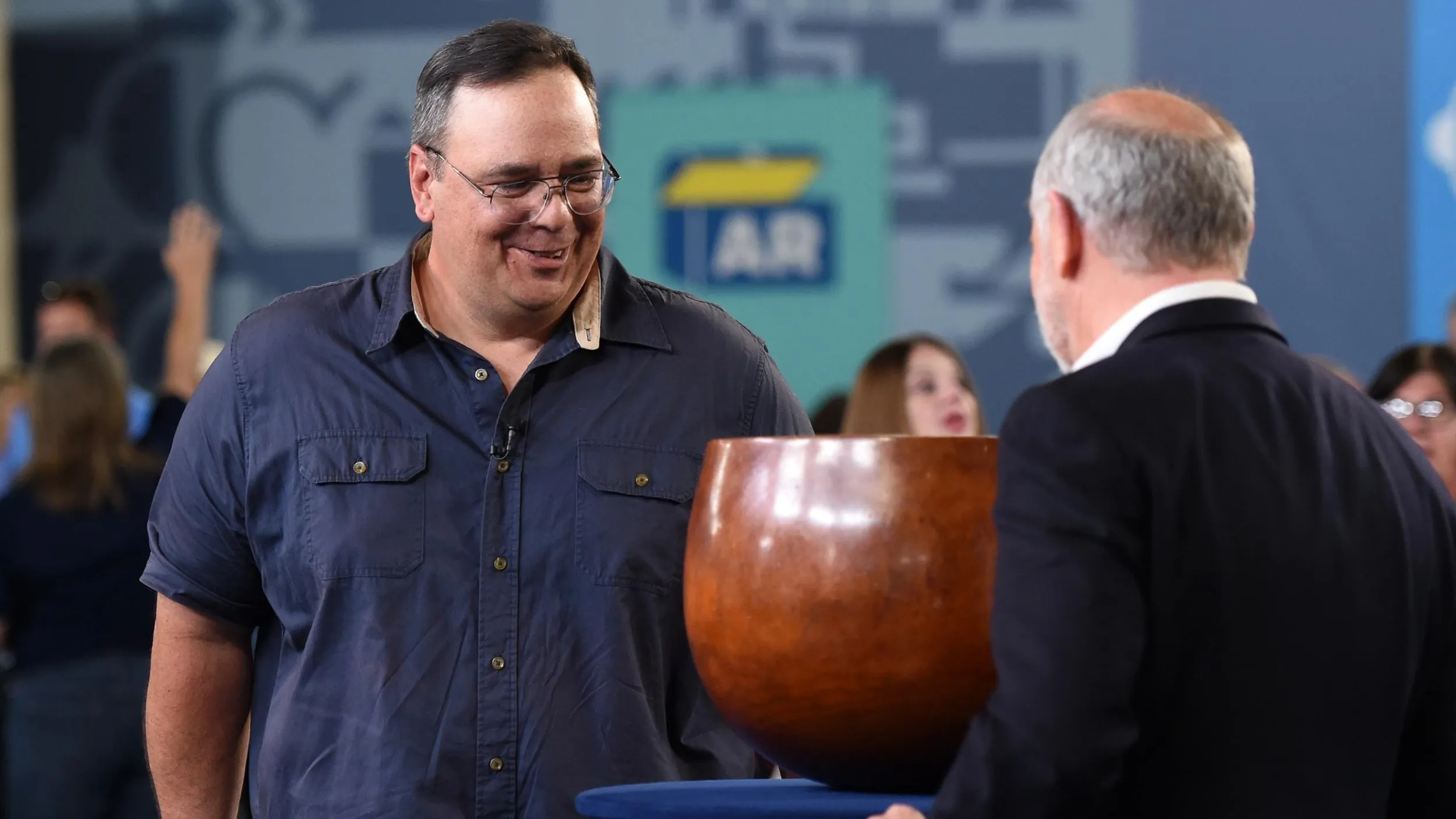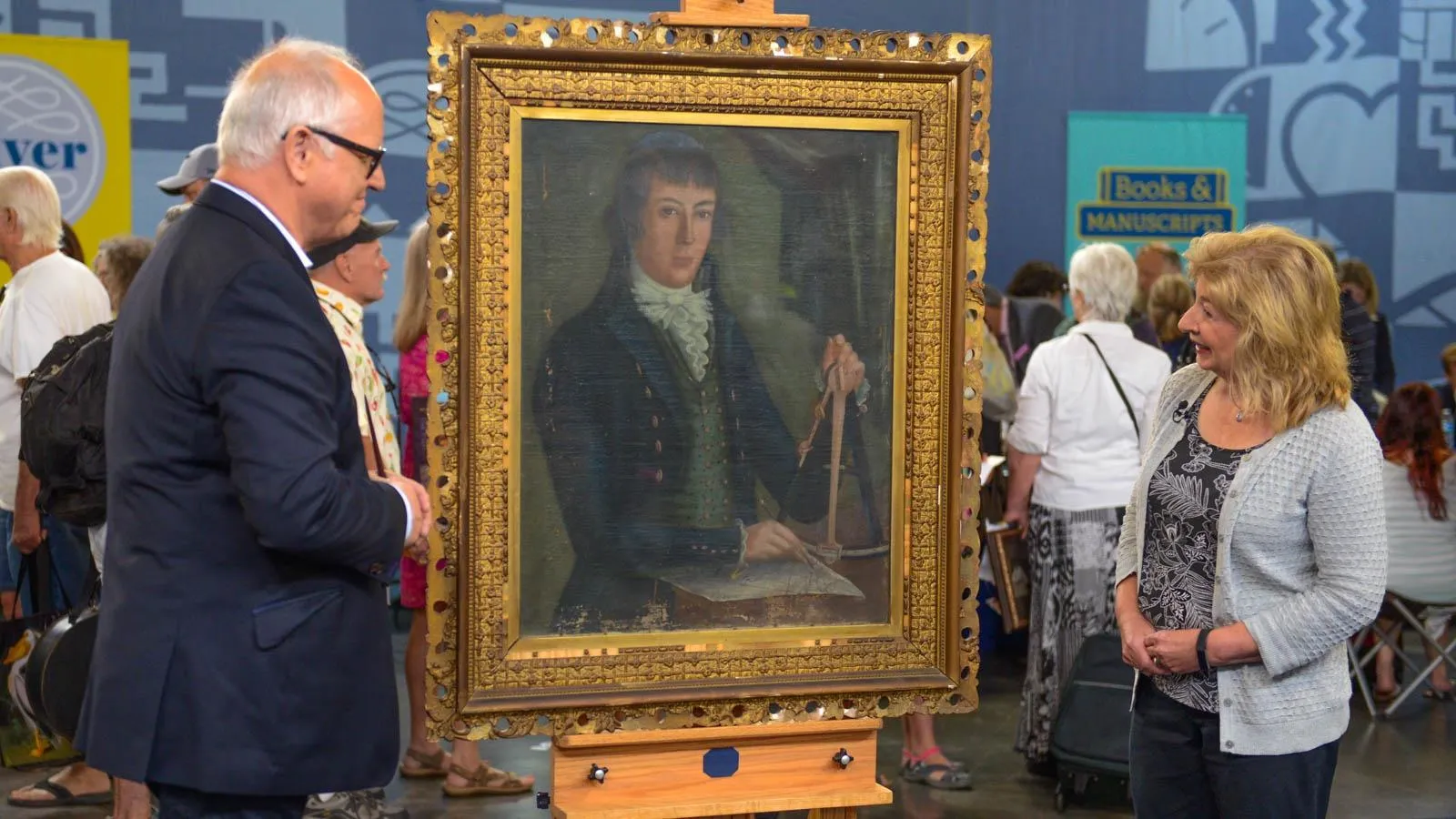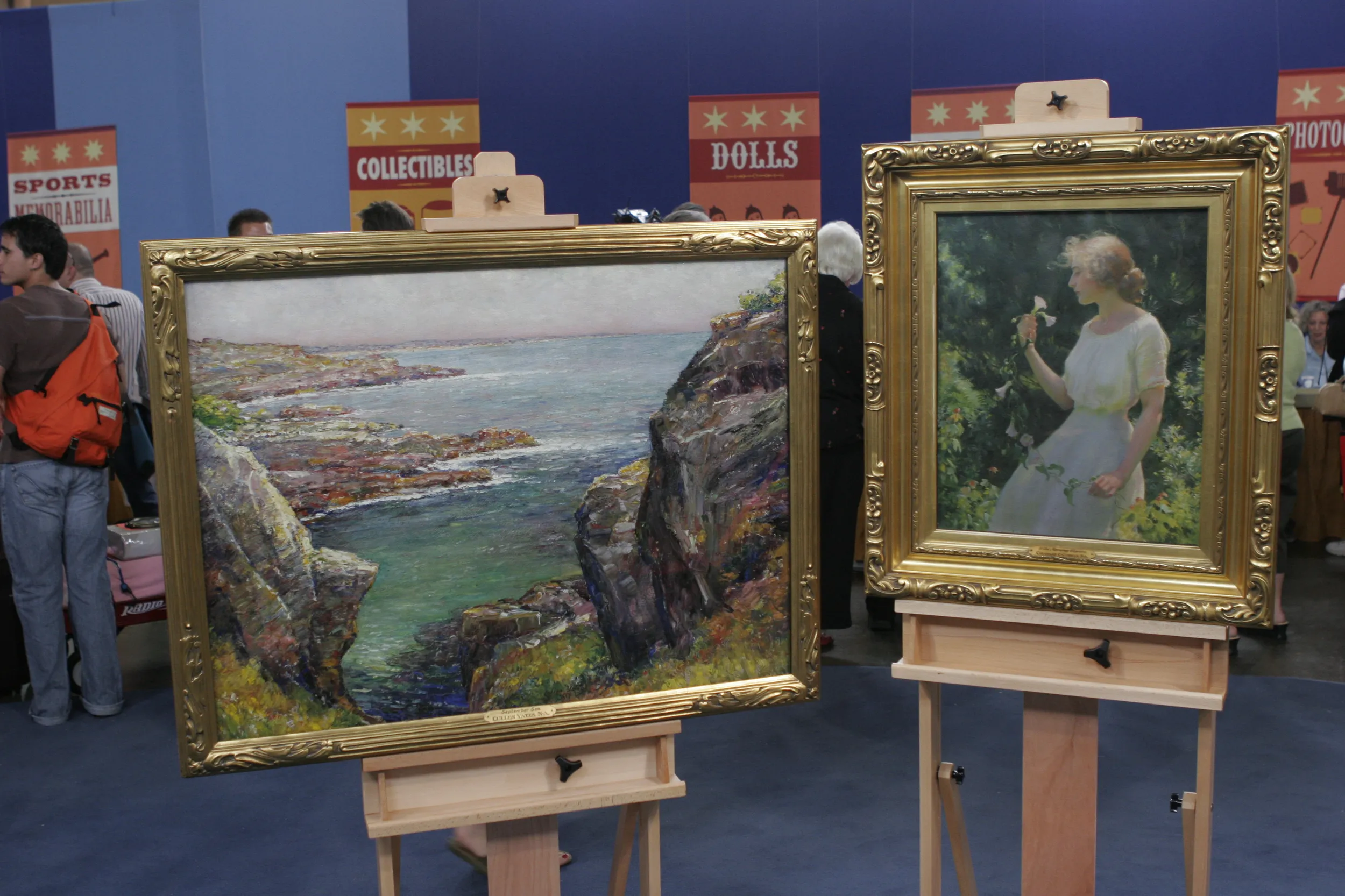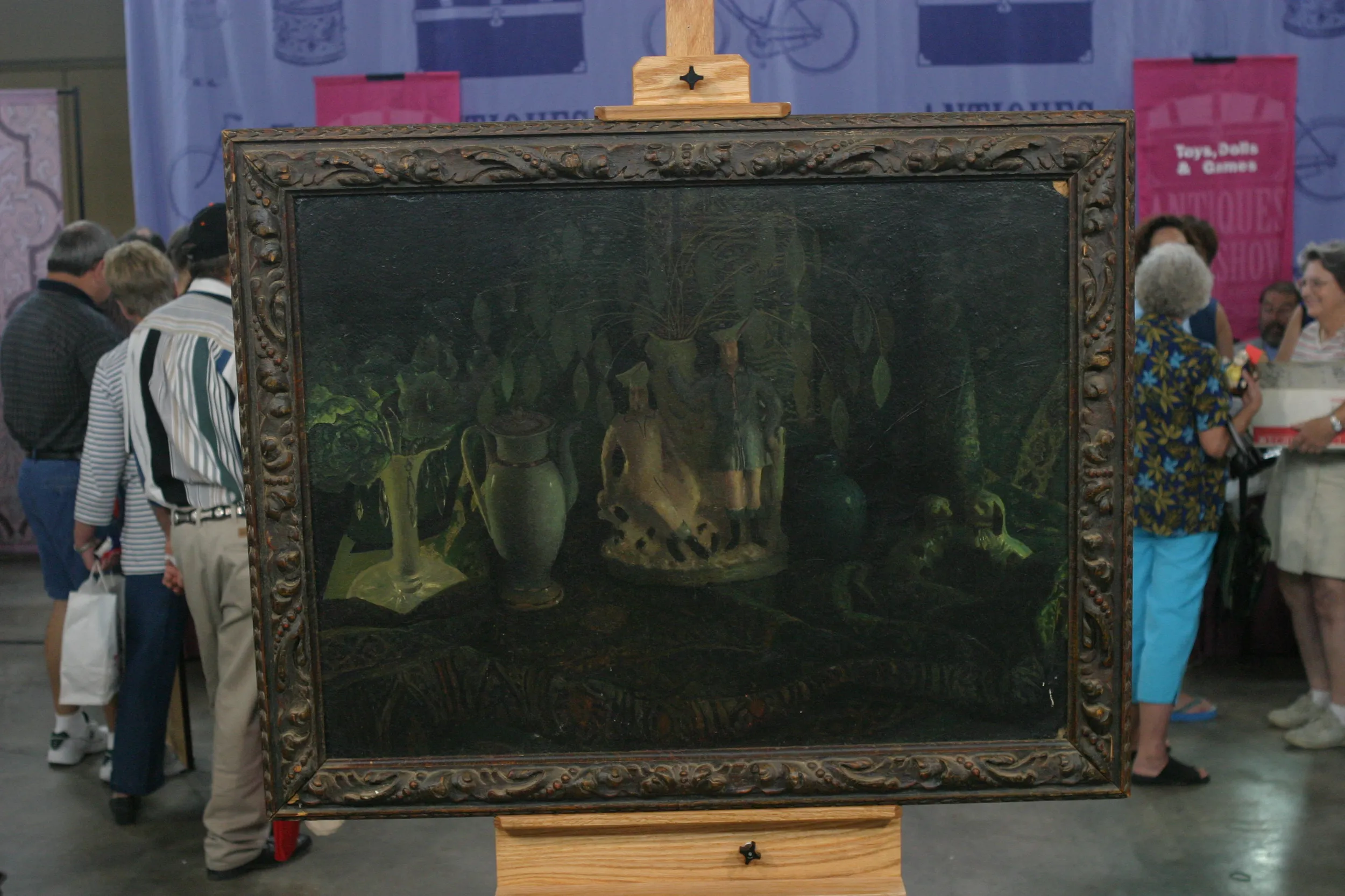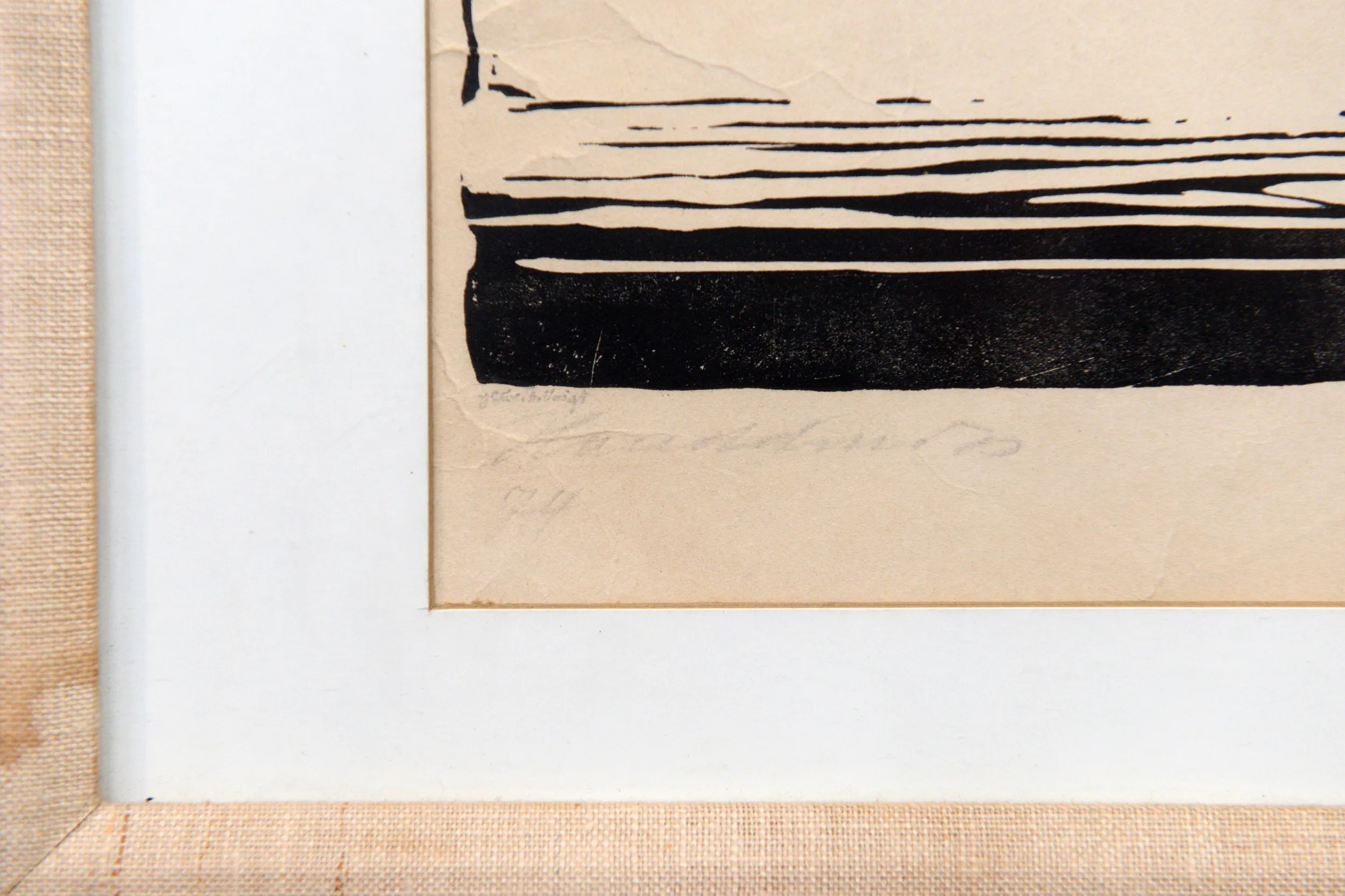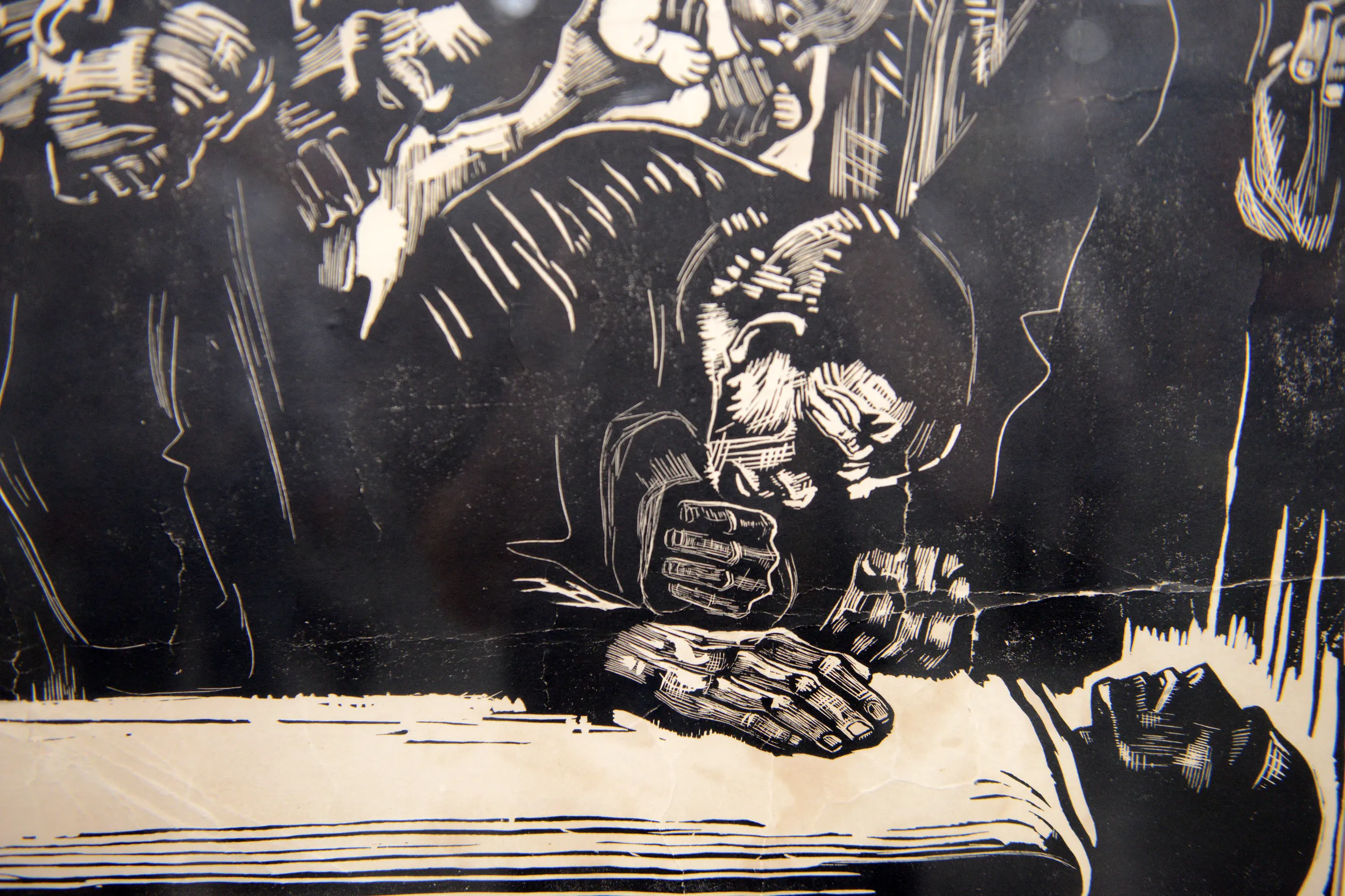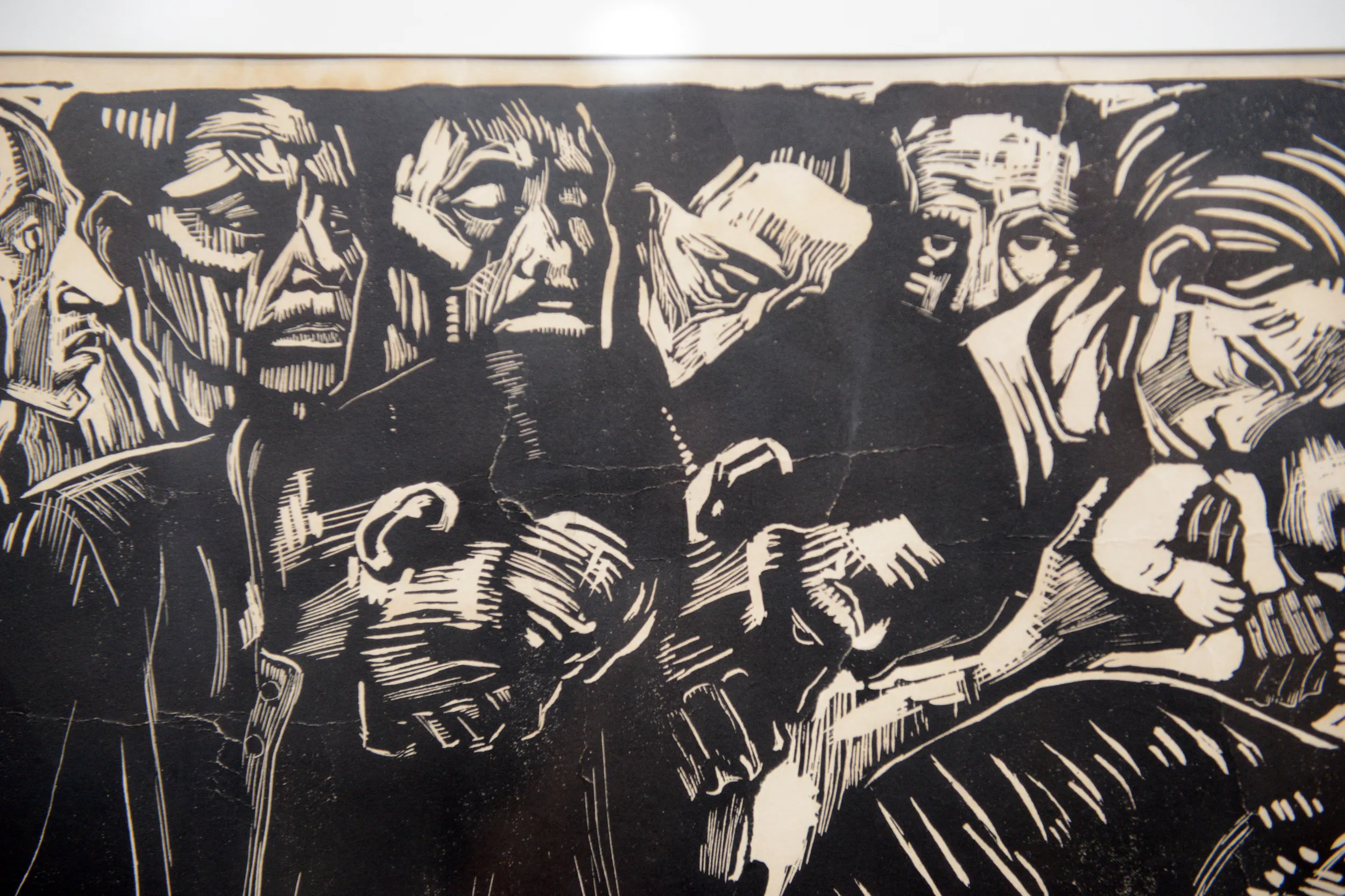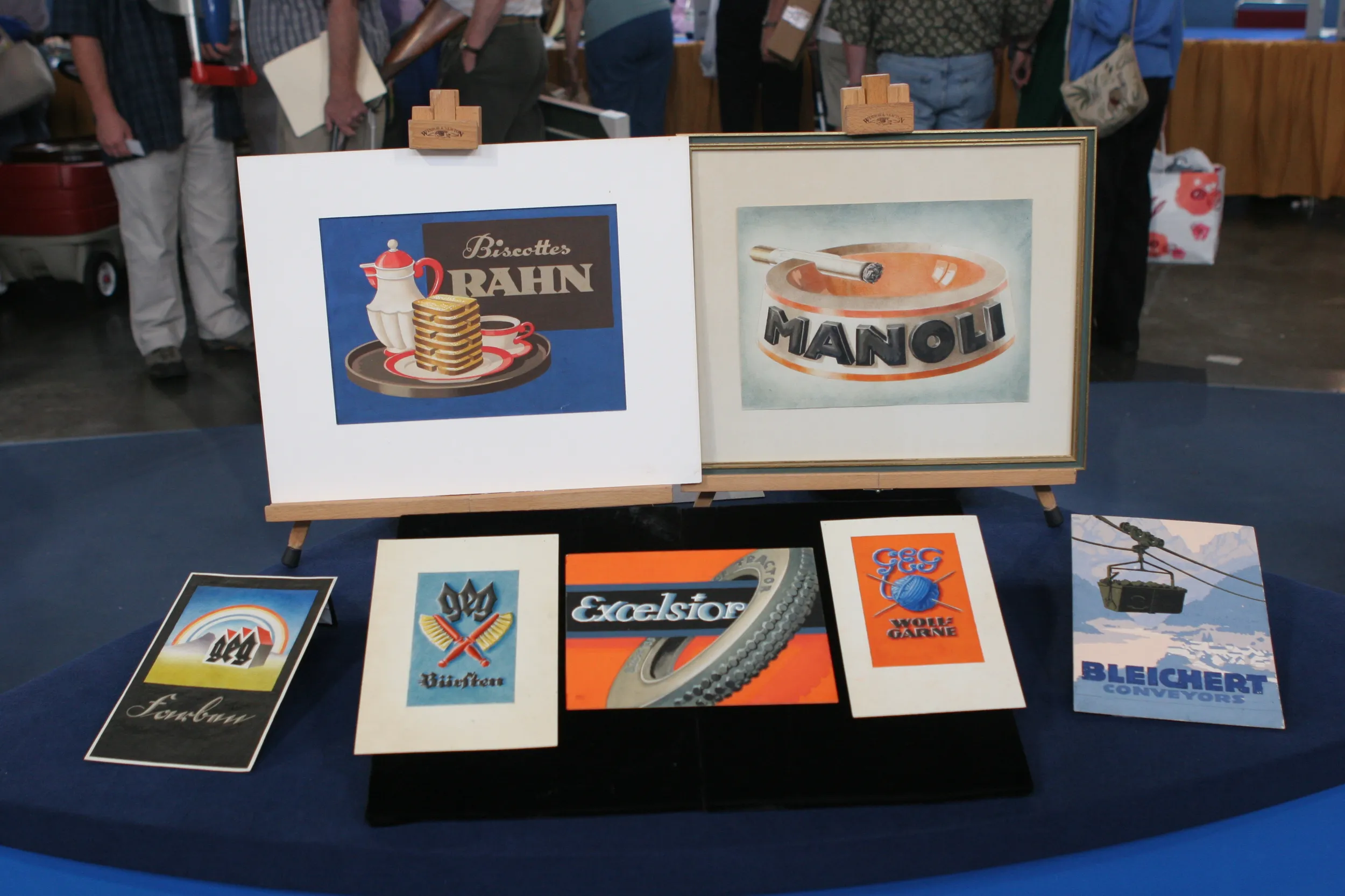GUEST: I went up to the garage sale, I saw it up on the wall, and I thought, "Man, I'd like to have that piece." The price on it was several hundred. I can't remember exactly how much.
APPRAISER: Do you remember when this was?
GUEST: (sighs) At least 15 years ago.
APPRAISER: All right.
GUEST: And I thought about it, and I went back a couple of hours later, and it was still there. And then I left again, 'cause I still couldn't afford it. And then I went and got my son, who was very interested in art. And then he and, uh, this gentleman started talking, and the guy really warmed up to us, and kind of just decided that we should have it. And he sold it to us for $100.
APPRAISER: Did you know anything about it?
GUEST: Well, he was telling me that it's a Käthe Kollwitz. She's from Germany, I believe.
APPRAISER: It is by the artist Käthe Kollwitz. She is a very important German printmaker during the first half of the 20th century. And she made several hundred woodcuts, etchings, lithographs. This is a woodcut, and Kollwitz signed it in pencil down here. The title of this print in German, it's called the "Gedenkblatt für Karl Liebknecht," and that's basically "A Memorial for Karl Liebknecht." And titled down here in pencil. And then in this very, very, very s, fine script is the printer's signature. When the armistice was signed, and Germany was defeated in 1918, there was a working-class uprising in Germany, and a revolt. Karl Liebknecht was one of the leaders of the working-class revolt, which was put down at the end of 1918. He was arrested, and in January of 1919, while he was being taken to prison, he was killed, and she made this print in early 1919. And this is Karl Liebknecht at his home, laid out before his burial. She went there, his family and friends were there. You can see them in the background, very sorrowful faces. So this is sort of her memorial to that man. Kollwitz was born to a fairly humble family. Her family was somewhat political and always associated with the plight of the working class. She was married early on, studied art, lived in Berlin. Both of her sons joined the army, the German army, in the First World War, and one of her sons was killed on the Western Front in 1914. And a lot of her imagery depicts the, the atrocities and the suffering of Germany and the, the rest of the world, really, in World War I and World War II. She worked into the 1940s, and her imagery never got any happier. It's all, it's all this vein.
GUEST: So how many were made?
APPRAISER: There are a couple hundred of these, but this is an early impression. In later printings, there was wood-cut printed text, which described the scene. There are some obvious condition issues with this work. I would imagine for, perhaps, $500 to $700 worth of conservation work on this...
GUEST: Mm-hmm.
APPRAISER: ...it would look much, much better than it does right now. Yeah. In this condition, as is, at auction, I would estimate it to sell for between $4,000 and $6,000.
GUEST: Really?
APPRAISER: Now, if you put some money into conserving it, I would put an auction estimate on it of $8,000 to $12,000.
GUEST: Yeah.
APPRAISER: So, that was a, that was a good find at the garage sale.
GUEST: Yeah.

